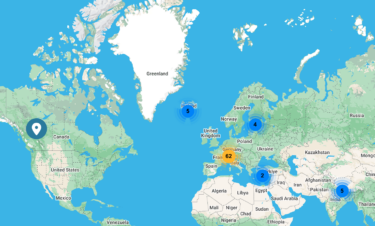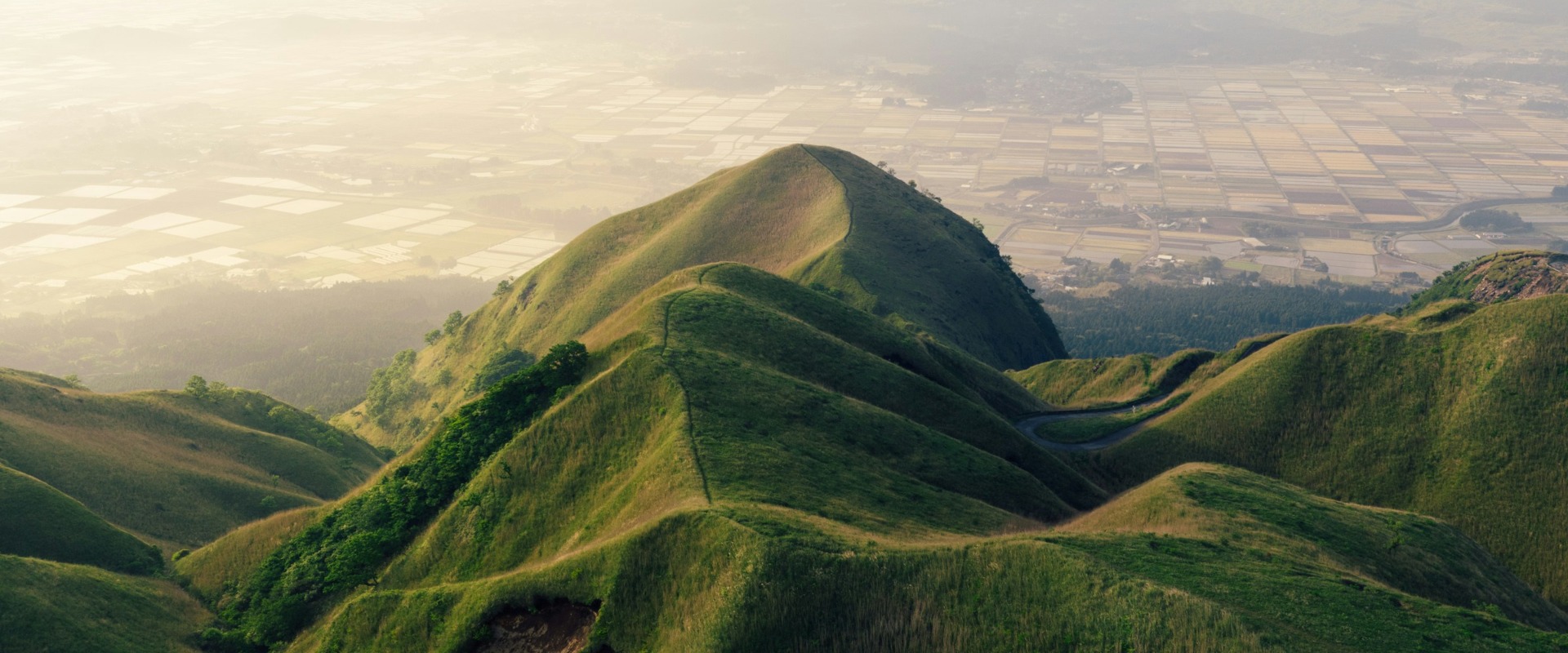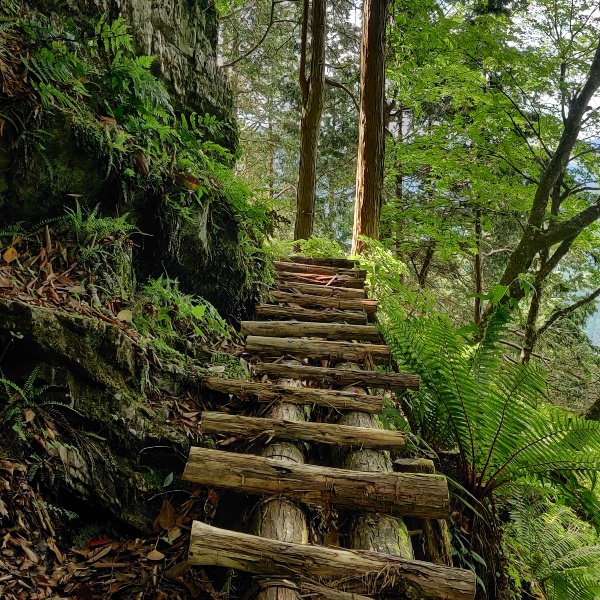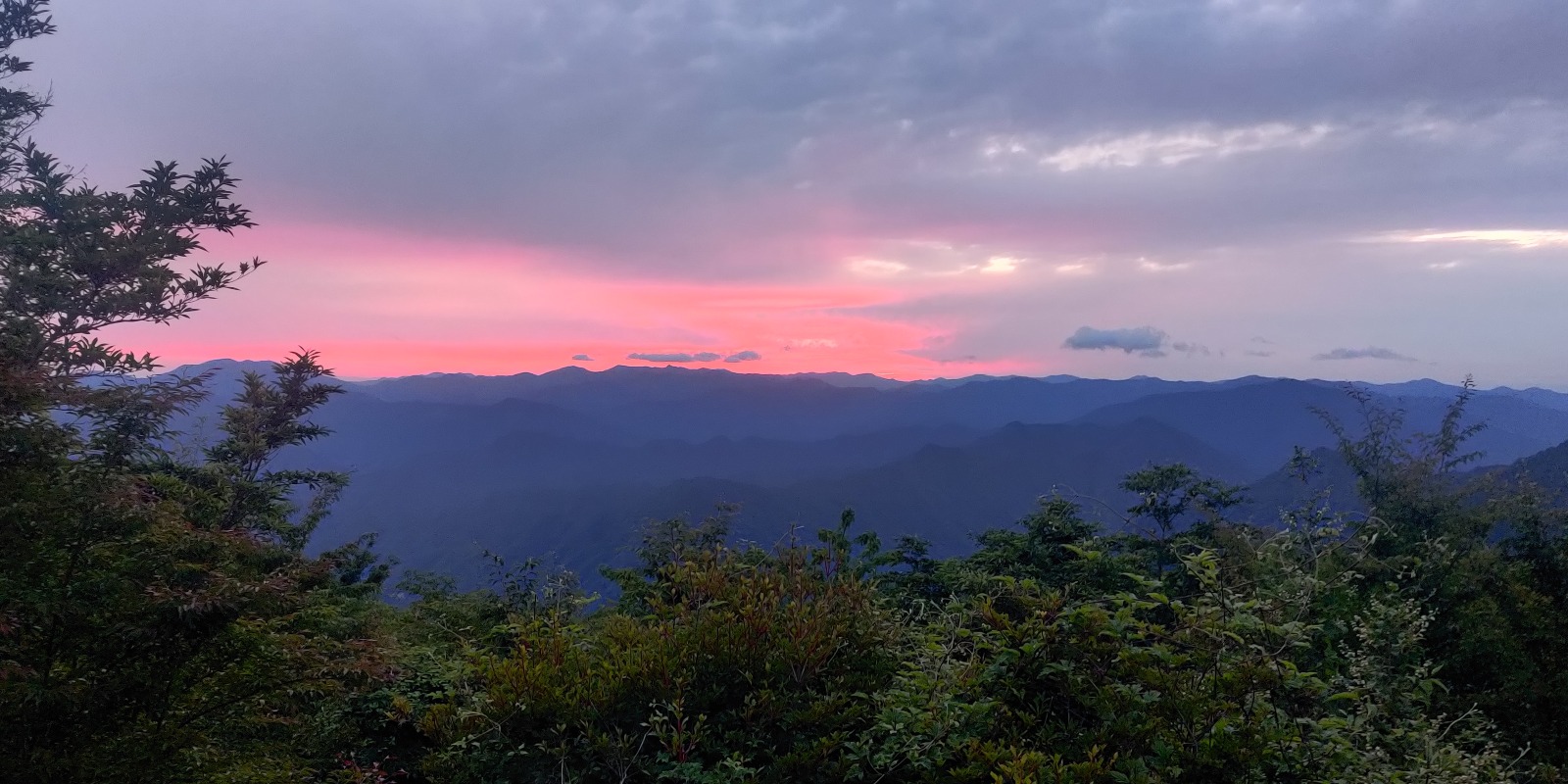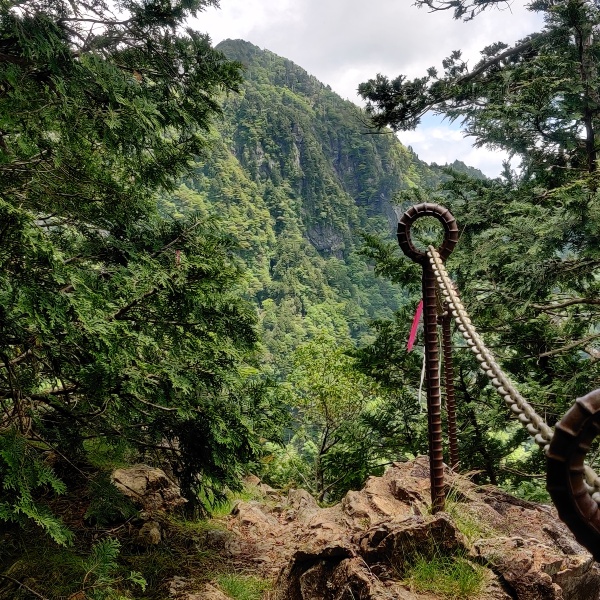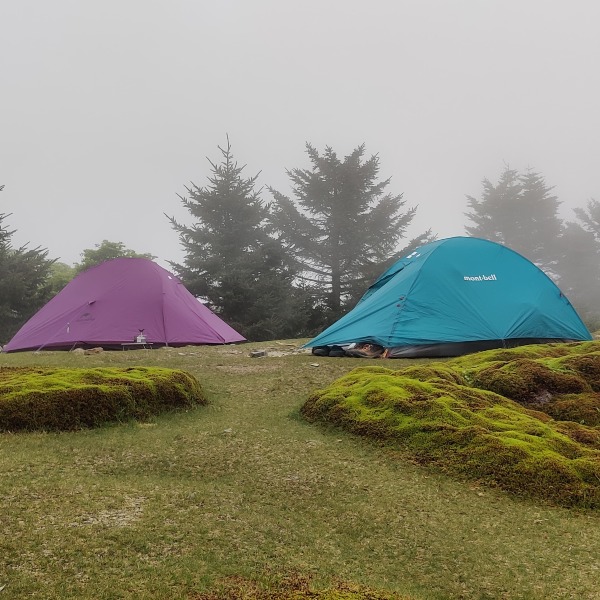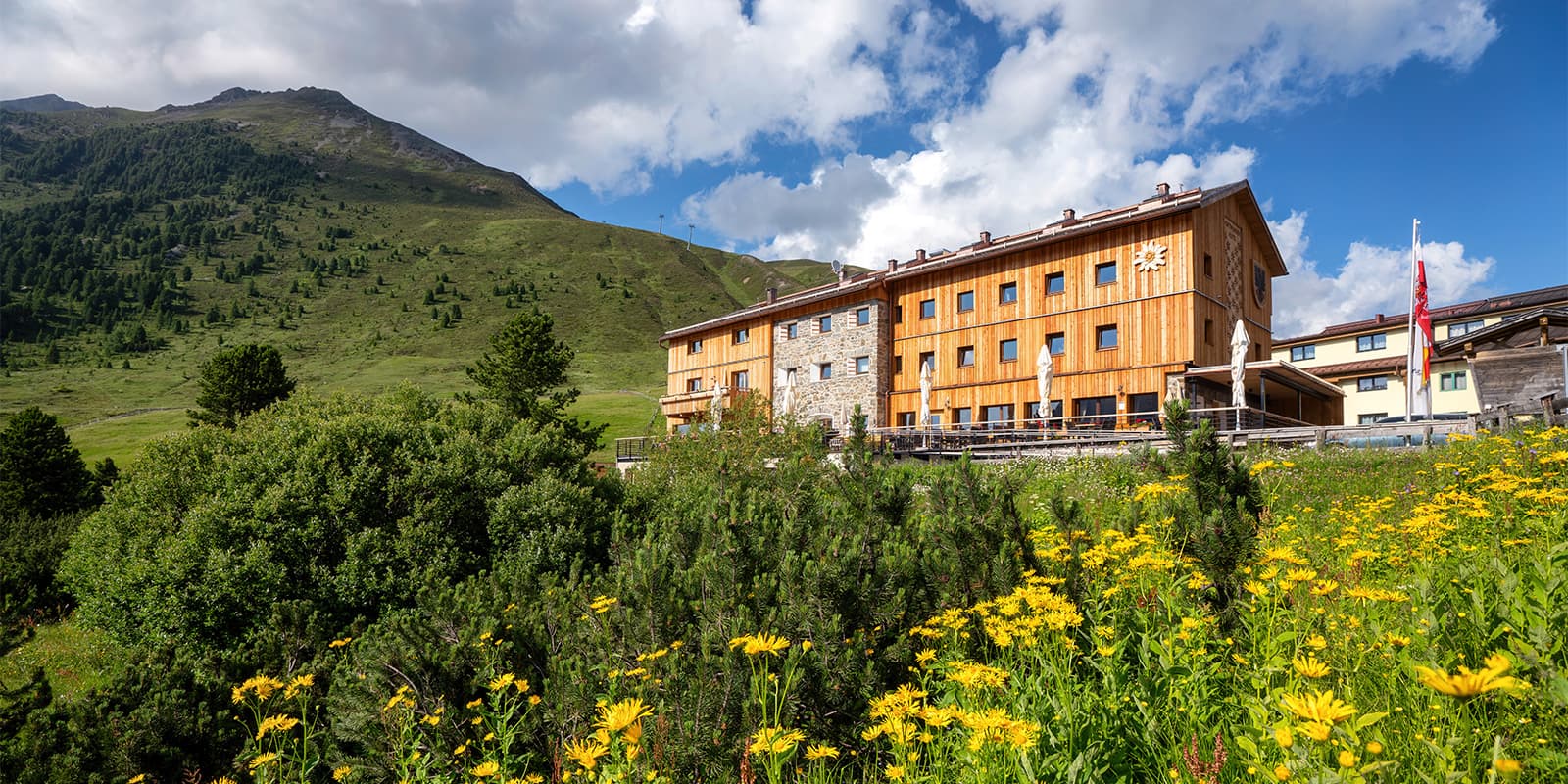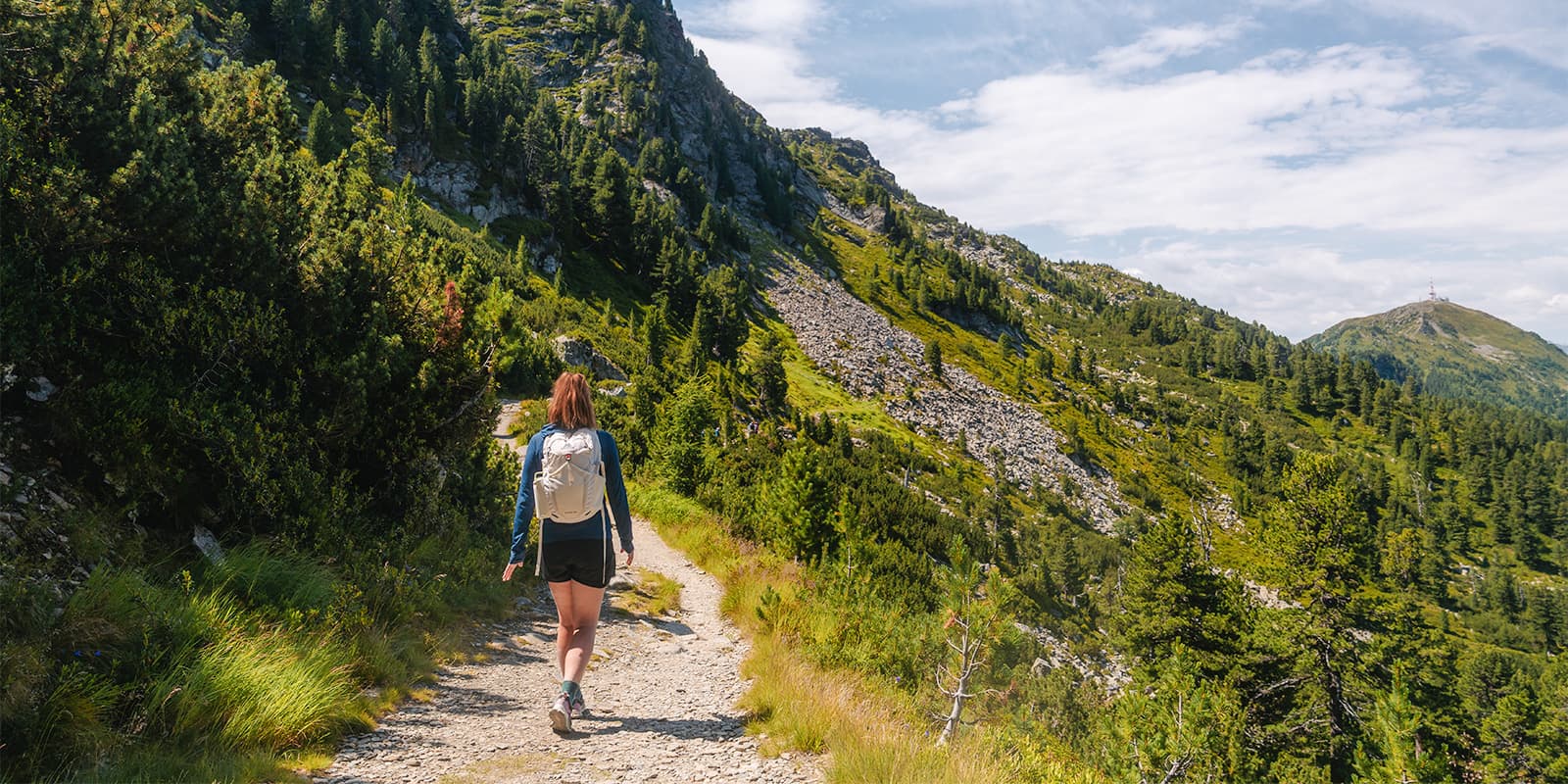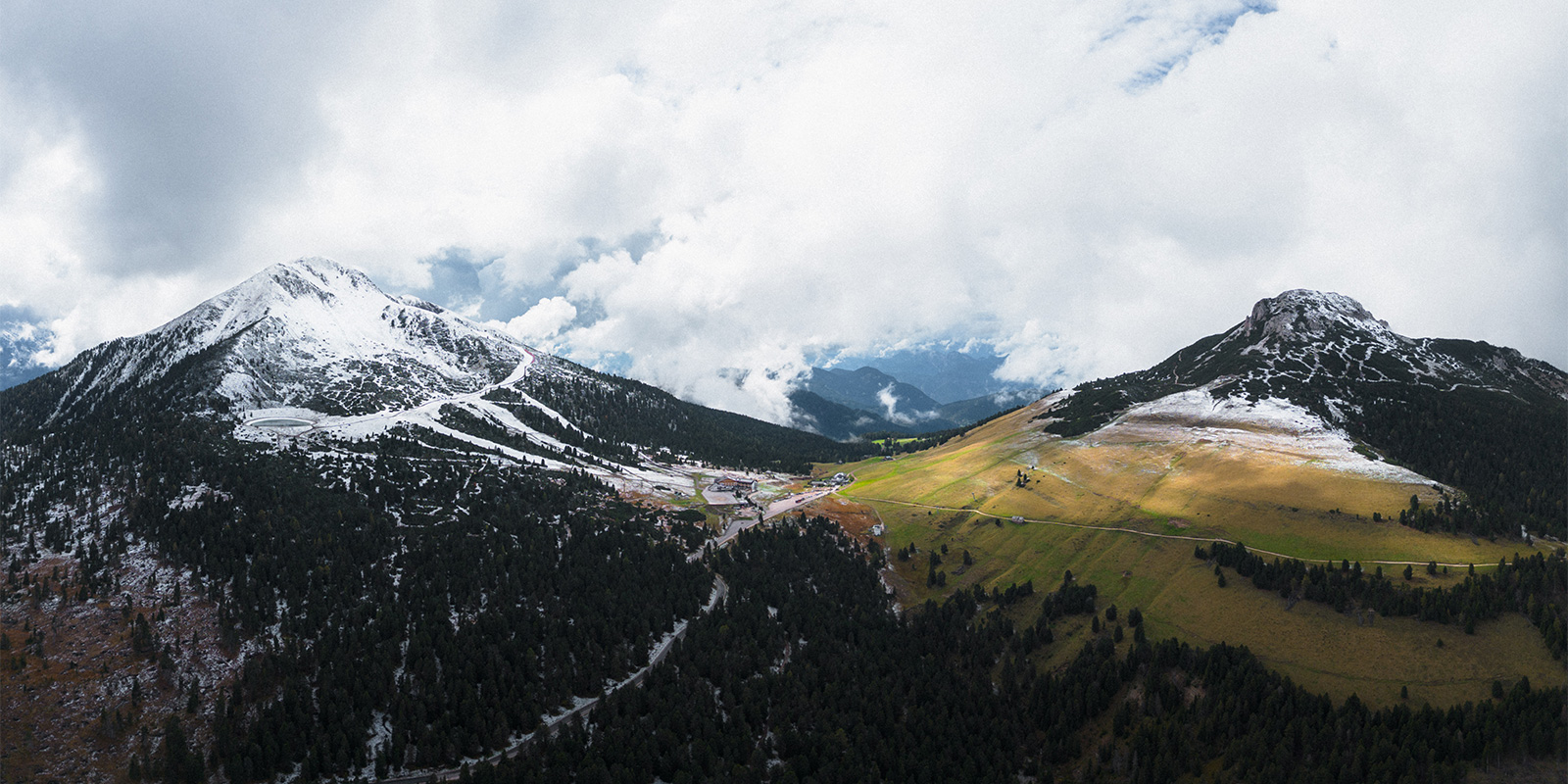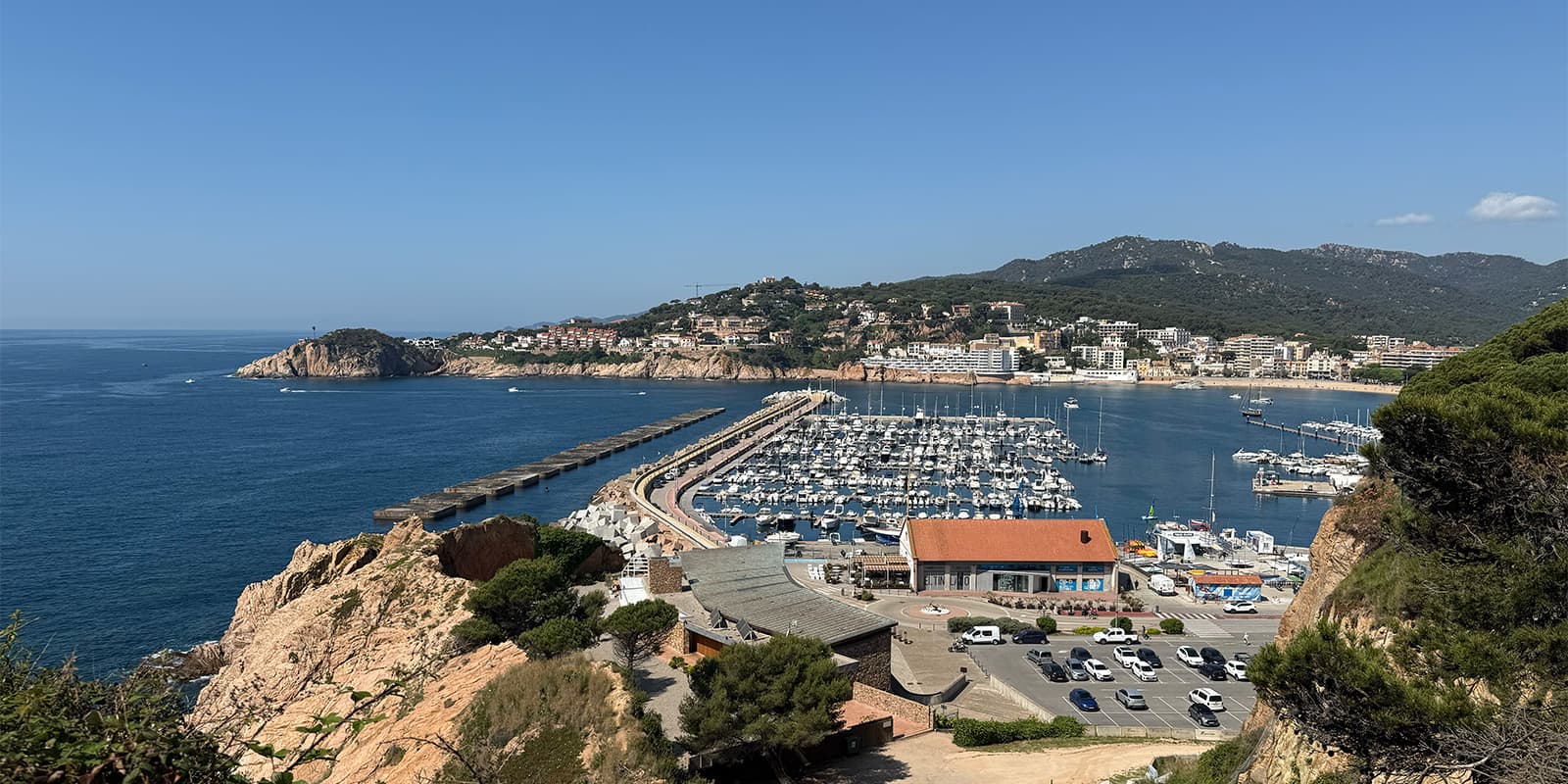After leaving the Misen Hut on stage three, there will be little to no human contact for the next 2 days, so getting a water refill at the hut is highly recommended, it costs 100 Yen for 1 liter. Immediately after leaving the hut, you’ll hike down into a Valley between Misen Mountain and Hakkyogatake, and then the route summits Hakkyogatake. From here wildlife is more common, from deer, mountain goats, boars, and snakes, to the possibility of bears.
After passing Shakagatake (one of the most technical ascents and descents of the route, from this point the route will be mainly losing elevation), you can stop for the night at Jinsennoshuku (Blue hut near a temple – when I visited in June 2024, it was slightly damaged from the inside, not sure about the current condition). This will be where you sleep if you plan to do the route in 6 days, which is recommended. However, if you’re hoping to finish in 5 days, it is recommended to keep going to Jikyo no Shuku. This section should not be underestimated, as it passes from the top of 10 low peaks of the Kii Mountains and you’ll need to push hard with few breaks to make it to the hut before dark. Near Jikyo no Shuku (400 meters off course) you can refill your water from a stream, and the hut has the facilities to boil it.
The two best spots to take a rest are at the peak of Hakkyogatake and Shakagatake, where you can enjoy the best views of the surrounding area.
After Jikyo no Shuku (1,052m), there are long sections of dense forests now that the elevation is lower than the first three days. During the first 10 kilometers of the day, you’ll pass the last two huts available on the trail. From this point forward only some sections for wild camping are available and getting a water refill is challenging.
A great area to set up camp is close to the Observation tower before Tamaki Shrine. The sunset and views from the Observation tower are amazing.
On the last day, the first checkpoint is Mt.Tamaki, which is just 2 kilometers in, and then the second checkpoint is Tamaki Shrine just below the mountain on the other side. This is a great place for a final water refill.
Onward from Tamaki Shrine, the route is mainly in forested areas up until Hongu. When you arrive in Hongu, you’ll see the big Tori Gate and the beautiful sight of the village on the other side of the river. After this point, there are still a few small hills for 3.5 kilometers and then the route goes down next to the river and crosses over a bridge, the last section is 1.5 kilometers on the road in the village towards Kumano Hongu Taisha Shrine.


